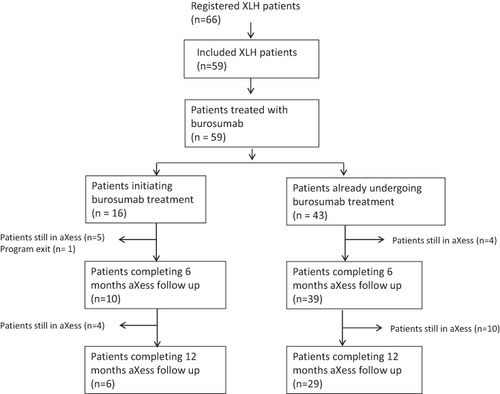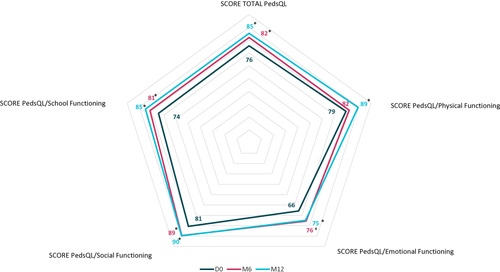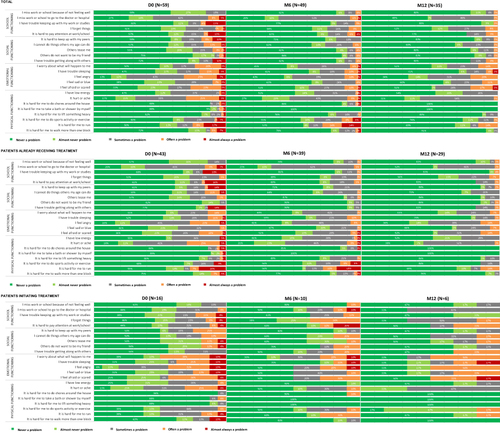Figures & data
Table 1 Baseline Demographic and Disease Characteristics of XLH Patients Monitored in the aXess Program
Figure 1 Flow chart. The outline of the selection and flow of XLH patients.

Table 2 Number of aXess Nurse Calls to XLH Patients (Subgroups of Patients Initiating Treatment and Patients Already Receiving Treatment), to Pharmacy, to Medical Analysis Laboratory, to Home Care Nurses and to Physician
Table 3 Change from Baseline (D0) to 6 and 12 Months in the Mean PedSQL Generic Core Scales (Global and Sub-Domains Physical, Emotional, Social, School Functioning) for All Patients
Table 4 Change from Baseline to 6 and 12 Months in the Mean PedSQL Generic Core Scales (Global and Sub-Domains Physical, Emotional, Social, School Functioning), Subgroup of Patients Initiating Treatment
Table 5 Change from Baseline to 6 and 12 Months in the Mean PedSQL Generic Core Scales (Global and Sub-Domains Physical, Emotional, Social, School Functioning), Subgroup of Patients Already Receiving Treatment
Figure 2 Mean change from baseline in PedSQL Generic Core Scales summary scores (Global and sub-domains Physical, Emotional, Social, School functioning) after 6 and 12 months aXess supports. *p < 0.05 for all changes from baseline.

Figure 3 Percentage of response to each PedSQL questionnaire item provided by XLH patients supported by aXess support program at DO, M6 and M12 - subgroups of patients initiating treatment and patients already receiving treatment.

Table 6 Perception of the Usefulness of the Patient Support Program After 6 Months aXess Monitoring
Table 7 Perception of the Usefulness of the Patient Support Program After 12 Months aXess Monitoring
